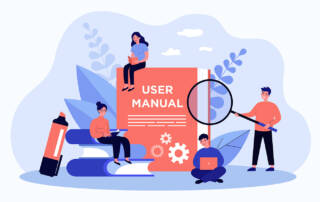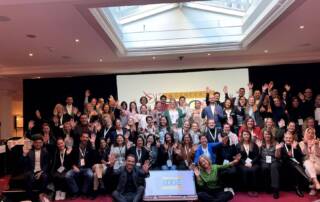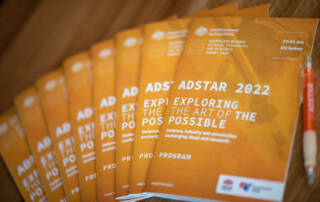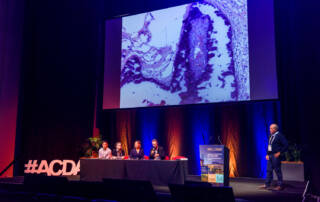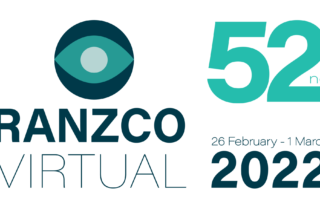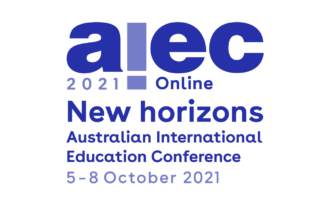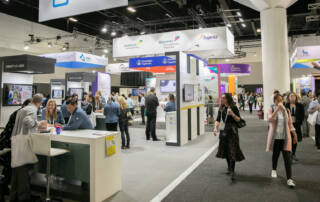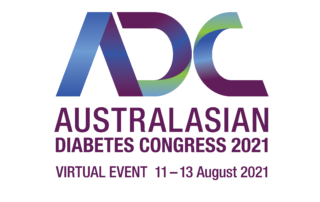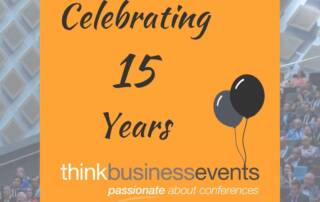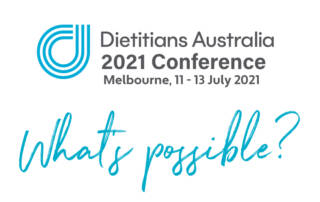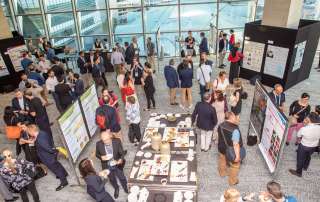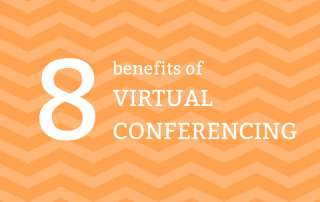The A-Z of Conferences
A for Acronyms – Anyone whose been in the MICE industry for even a short while knows just how prevalent acronyms are. Even though they are sometimes hard to keep track of, when you have quite long conference names, acronyms are very helpful. They’re also ideal for using as your event or conference hashtags (see H).
B for Breakout sessions – You’re never going to have hundreds of individuals attending a conference interested in all the same things so breakout sessions allow smaller groups to get together and discuss niche topics or ideas. You can either present these as casual networking opportunities or as formal groups sessions that use a specific presentation type such as Rapid Fire and Fishbowl. You can read more about these here.
C for Committee – scientific, organising, chairs and reviewers. The conference committee are the representatives of the client and organisation in the conference management process and assist the organisers in reviewing abstract submissions, putting forward speakers, developing the academic program and providing insights into the demographics of the event. This helps to create the right tone that reflects the profession and its stakeholders.
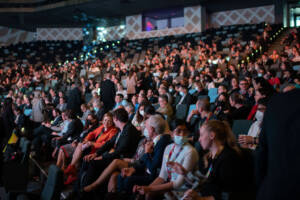
D for Delegate – where would any conference or meeting be without its delegates? They are the customer in this relationship and it’s important their journey is taken into consideration each step of the way. From communication, registration, accommodation and feedback all touchpoints should be carefully considered in the planning stages of your conference journey.
E for Early bird – originally a marketing tactic and pricing strategy used by businesses to drum up excitement and offer discounts to those who are committed to purchasing much before the date of launch or wider promotion, early bird registrations are now part and parcel of any event. You can read a little more about this strategy here.
F for Face-to-face – still the most desired format of conference delivery particularly after a few years of wondering if it would be possible again. Face-to-face events offer something special in the way of speaker/presentation delivery and networking. Although there are benefits to having a virtual component, we’ve seen in the past few months how much F2F conferencing is it.
G for Grants – grants are a great initiative offered by many local, state and federal governments and industry groups. Whenever you start the management process it’s always worth keeping an eye out for current grants on offer. Just like tender writing it’s worth spending some dedicated time on the submission process.

H for Hashtag/hybrid – both these Hs are just as important as one another so we couldn’t just use one. Hashtags are a requirement for any conference wanting a presence across social media channels. Not only does a specific hashtag mean a way for stakeholders to engage with one another in a consistent manner but at the end of the conference you are able to collate and report properly on the level of impressions and engagement the conference received online.
Hybrid – if we’d written this piece a few years ago it would be doubtful that hybrid would make the cut, but now it’s just as much a part of the conversation that registration, speakers or entertainment is.
I for International speaker – Now more than ever having an international speaker grace the stage (albeit virtually) at your conference is always a highlight. With the magic, and acceptance, of virtual presentations, including internationals as part of the speaker line-up is expected. Although we still recommend having your keynotes presenting in person if possible.
J for Juggling Tasks – literally everything referenced in this article is a job that a conference manager or coordinator has to oversee. We came across this formula for juggling an event called B.A.L.L by Jen Slaw which we thought was an accurate and helpful method to follow when you’re juggling many balls (tasks) in the air.
K for Kit – how do conference managers manage without their conference kit? The kit includes helpful items such as chargers (all kinds and inputs), pen and paper, band-aids, comfortable shoes and much more. Check out what our team have in their conference kits here!
L for Live Polling – no longer does the MC or speaker need to hurriedly count hands in the air. With live polling a standardised feature of event apps and virtual attendee hubs you can increase real-time engagement by involving the session audience in questions and queries related to the program content.
M for MC – the feel and tone of a conference gala dinner can rest on the shoulders of the Master of Ceremonies (MC) so it’s important you find the right fit for the type and theme of event. Booking someone via an agency can help cut down search time and gives you and your client a group of individuals to choose from who are competent, experienced and pre-screened.
N for Networking – A prime reason our delegates attend a conference is to socialise and network with one another. Meetings, conferences and congress’ are a prime opportunity for delegates to make connections with others in their field who live interstate or overseas, or locals who simply don’t get a chance to interact with each other in everyday life. Most of the time this is where the magic happens, and probably how a lot of new ideas and concepts are generated.
O for OH&S – insurance, warranty, first aid, CPR, you can’t run an event without these occupational health and safety things covered. Most venues will have their own procedures and policies in place but we would recommend that all conference organisers have internal risk management processes in place before embarking on any event.
P for Program & Abstracts – another primary component of a meeting, conference or congress. The program along with the associated speakers are the main drawcard for business events and usually what delegates are most looking out for in pre-event communications. Delegates are looking for content they can’t find anywhere else, and all being concentrated in the one place. The program should be robust, forward thinking and cutting-edge in regard to the industry or profession of the conference.
Q for Q&A – what’s attending a conference without having the opportunity to ask that burning question you’ve had bubbling away in your brain for months. Or maybe something presented within the program has sparked a new thought. Although the old microphone passed around the audience is the standard for facilitating a Q&A, with the introduction of mobile event apps delegates can now ask all the questions they like (whether attending in-person or online) and go through a democratic process of having their questions upvoted to decide whose question is asked (within the usually very limited timeframe).
R for Registration – usually the first thing to consider and discuss for your conference management timeline is when registrations will open, when will early bird close, and what types of registrations will be on offer. From fellows, students, single and full, these decisions will impact your capacity limits and the all important bottom line.
S for Sustainability – although sponsorship and speakers/speaker management are important cogs in the conference machine the relevancy of sustainability in our industry is at an all-time high. We are seeing our venues lead the charge with a focus on structural change in the way waste is managed, catering is locally sourced and the huge amounts of energy used are coming from renewable sources. Some initiatives we’ve seen implemented over the last few years include; reusable cutlery, water stations, digital signage and virtual swag bags.
T for Tenders – alongside existing relationships, submitting a tender is the primary process of how a PCO can gain the management of a conference, meeting or event. Tender writing is a skill unto itself and should be completed with care and consideration. Including case studies and highlights of previous conferences is important but make sure to focus on what the potential client is looking for and create the tender around how your services will address their needs.

U for Understanding (your audience) – like the above re. Tender writing, this is imperative for the organisation to consider and must be communicated to the PCO so they can plan their marketing and promotion accordingly. Whether it be an association with members, a medical college with fellows or an industry group with many different stakeholders your event must provide VALUE to their professional and/or personal endeavours.
V for Venue/volunteer/virtual – a surprising number of V words are appropriate to use here and none of which are less important than the other. Where would an event be without a great hotel or convention centre? Depending on the size of your event volunteers are an absolute must-have and just a few short years ago, the concept of virtual conferencing was saved for extreme situations but is now always part of the conversation when planning a conference.
W for Wayfinding – anyone attending a new conference centre or venue can find themselves wandering around aimlessly without a little help. The sometimes-cavernous nature of convention centres can throw off even the most experienced delegate so with either staff, volunteers or robots(!) you can offer wayfinding services in a few different ways.
X for eXhibition – Yes, I know we’re cheating a little bit here but we couldn’t possibly leave off Exhibition in the A-Z of Conferences. The exhibition and its exhibitors are imperative to the financial support of any successful conference and over the course of the pandemic we all saw how important it is for promoting sponsors, advertising new products, and allowing delegates to engage with industry representatives. Exhibitions have come a long way and now it’s normal to see booths embracing and showcasing new technology with things like robots, and augmented and virtual reality.
Y for Yodelling – because we couldn’t think of anything else for Y! If anyone has had a yodeller at your event, we’d love to hear about it!
Z for Zzz – Get your sleep! Conferences and meetings can be exhausting for all involved. Not only are you socialising and networking, but thinking and consuming all that new information can be very tiring in itself. Make sure to get plenty of sleep before and during the days of the event.
Got questions? Contact us for more information and to discuss your upcoming event.
Read More of Our Event Thoughts
- Think Business Events Partners with Hidden Disabilities Sunflower to Enhance Accessibility at EventsKim Stevenson2024-11-25T15:30:49+11:00
Think Business Events Partners with Hidden Disabilities Sunflower to Enhance Accessibility at Events
- How To Prepare When Attending Your First ConferenceKim Stevenson2023-03-20T16:07:18+11:00
How To Prepare When Attending Your First Conference
- Kim’s trip to Geneva and the IAPCO EDGE SeminarKim Stevenson2023-01-27T15:19:43+11:00
Kim’s trip to Geneva and the IAPCO EDGE Seminar
- We asked some of our team ‘What’s in your conference kit?’Kim Stevenson2022-11-21T14:46:55+11:00
We asked some of our team ‘What’s in your conference kit?’
- 6 important things to remember when organising an international conferenceKim Stevenson2022-09-30T16:51:56+10:00
6 important things to remember when organising an international conference
- Case Study: The Australian Defence Science, Technology & Research SummitKim Stevenson2022-10-10T10:47:15+11:00
Case Study: The Australian Defence Science, Technology & Research Summit
- Case Study: The Australasian College of DermatologistsKim Stevenson2022-06-09T11:55:32+10:00
Case Study: The Australasian College of Dermatologists
- Case Study: Royal Australian and New Zealand College of OphthalmologistsKim Stevenson2022-04-07T17:11:31+10:00
Case Study: Royal Australian and New Zealand College of Ophthalmologists
- Case Study: Australian International Education Conference 2021Kim Stevenson2022-02-03T13:17:15+11:00
Case Study: Australian International Education Conference 2021
- 18 months of virtual and hybrid conferencing – these are our top 5 takeawaysKim Stevenson2022-09-27T12:46:37+10:00
18 months of virtual and hybrid conferencing – these are our top 5 takeaways
- Returning to face-to-face events 2.0admin2022-09-27T12:45:07+10:00
Returning to face-to-face events 2.0
- Case Study: Australasian Diabetes Congress 2021Kim Stevenson2022-09-27T12:44:30+10:00
Case Study: Australasian Diabetes Congress 2021
- Celebrating 15 years of Think Business Eventsadmin2021-09-22T14:50:01+10:00
Celebrating 15 years of Think Business Events
- Case Study: Dietitians Australia 2021Kim Stevenson2022-09-27T12:43:44+10:00
Case Study: Dietitians Australia 2021
- Exploring the new world of hybrid eventsKim Stevenson2022-09-27T12:42:53+10:00
Exploring the new world of hybrid events
- Returning to face-to-face eventsKim Stevenson2020-09-02T11:55:48+10:00
Returning to face-to-face events
- Our favourite virtual sponsorship opportunitiesadmin2022-09-27T12:35:50+10:00
Our favourite virtual sponsorship opportunities
- What’s the difference between a webinar and a virtual conference?admin2022-09-27T12:33:27+10:00
What’s the difference between a webinar and a virtual conference?
- Five Stages of the Conference Marketing Cycleadmin2022-09-27T12:27:59+10:00
Five Stages of the Conference Marketing Cycle
- Working from home: Staying productive and connectedadmin2020-04-06T17:26:27+10:00
Working from home: Staying productive and connected



